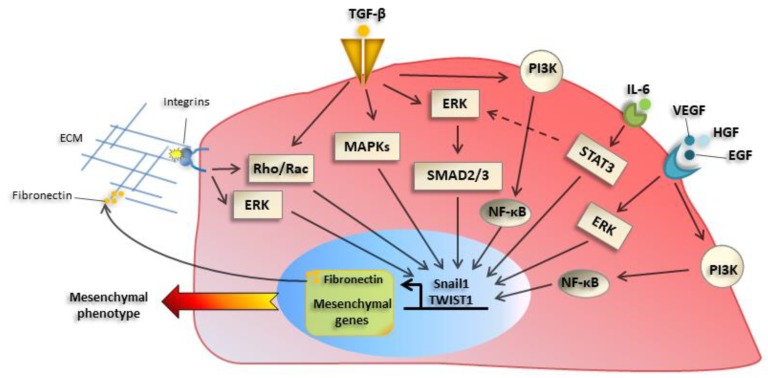Figure 2.
Main molecular mechanisms underlying EMT activation. Transforming growth factor-β (TGF-β) receptor activation induces a classical mother against decapentaplegic (SMAD) pathway, as well as ‘nonclassical’ pathway, such as mitogen-activated protein kinase (MAPKs), Phosphoinositide 3-kinase (PI3K)- mammalian target of rapamycin (mTOR), or Rho guanosine triphosphatase (GTPases), which induce EMT-TFs such as Snail1 and TWIST1. Besides their activity as transcriptional regulators, they control the expression of mesenchymal genes and extracellular matrix (ECM) proteins, such as fibronectin and collagens, whose production is increased during EMT. The alteration of ECM composition causes changes in expression and activation of integrins, which promote migratory proprieties of cancer cells. Integrin signaling in turn sustains EMT induction through extracellular signal–regulated kinase (ERK) and Rho GTPases signaling pathways. Tyrosine receptor ligands (EGF, HGF) and cytokines, such as IL-6 and VEGF, are other factors involved in EMT activation through ERK, PI3K, and NF-κB pathways.

